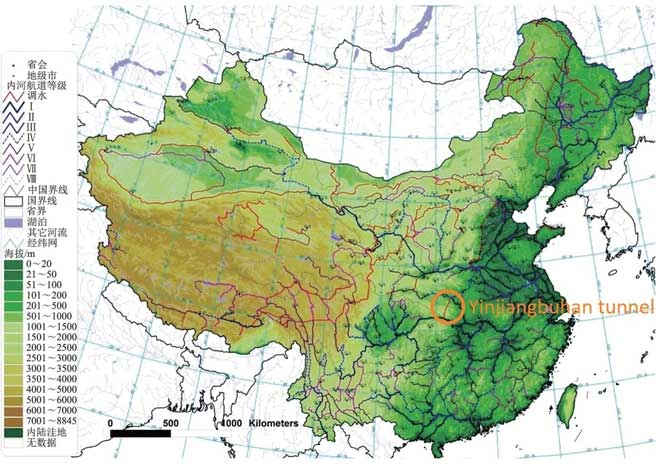China has launched a new tunnel project to transport water from the Three Gorges Dam to Beijing as part of an infrastructure plan aimed at boosting economic development.
The Yinjiangbuhan Tunnel will channel water from the Three Gorges Dam, the world’s largest hydroelectric dam, to the Han River, a major tributary of the Yangtze River.
Water will flow from the Han River downstream to the Danjiangkou Reservoir, then northward to Beijing via the central route of the South-to-North Water Diversion Project. This central route consists of a 1,400 km long canal.
According to Guangming Daily, a Beijing-based newspaper, the tunnel is expected to take a decade to build and cost approximately 60 billion yuan (about 8.9 billion USD). The Yinjiangbuhan Tunnel will be approximately 240 km long and will be located 1,000 meters underground.

Image showing the location of the Yinjiangbuhan Tunnel. The red lines represent tunnels and water channels currently under construction or planned in China. (Photo: Chinese Academy of Agricultural Sciences).
Niu Xinqiang, Chairman of the Yangtze River Survey, Planning, Design, and Research Institute, stated: “The Yinjiangbuhan Tunnel will establish a physical connection between the Three Gorges Dam and the South-to-North Water Diversion Project, two critical infrastructures in China.”
Zhang Xiangwei, head of the planning department at the Ministry of Water Resources, described the Yinjiangbuhan project as “the beginning” of other projects.
In an interview with Guangming Daily, he noted that China’s water infrastructure “is still incomplete when considering the long-term design.” “There will be many subsequent projects to expand and strengthen the main water supply networks across the country.”
Liang Shumin, an economist and development researcher at the Chinese Academy of Agricultural Sciences, mentioned that the total length of tunnels and canals currently under construction or planned to transport water in China could reach nearly 20,000 km. This distance is equivalent to a round trip from Shanghai (China) to Seattle (USA).
China’s water resources are unevenly distributed. The eastern and southern regions of the country frequently experience flooding, while water scarcity is prevalent in the western and northern areas.
The economic downturn caused by the pandemic has prompted the Chinese government to invest in large-scale infrastructure projects to stimulate economic growth, according to the South China Morning Post.


















































